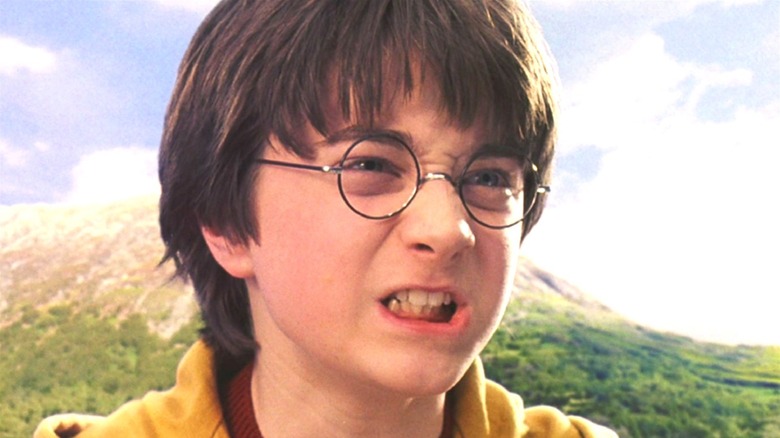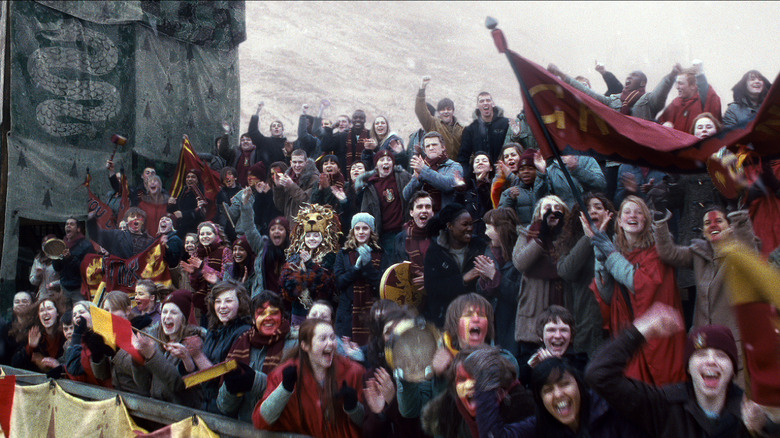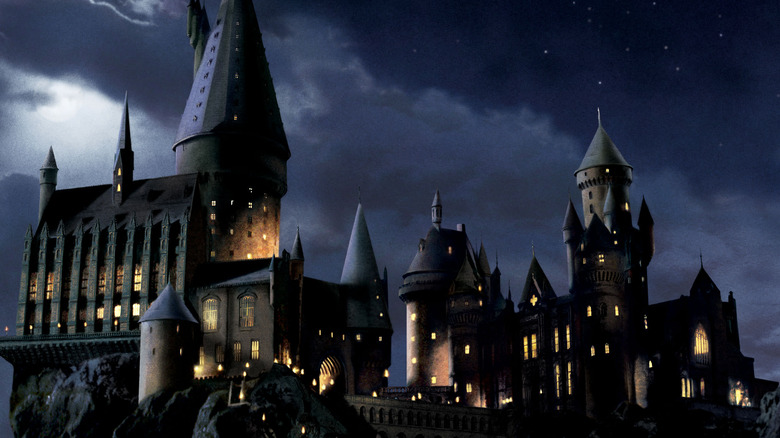The Hogwarts Theory That Changes Everything About Harry Potter
Hogwarts may be magical, but not even a fantasy world such as "Harry Potter" is immune to its fandom's discerning eyes. With that in mind, there's no end to the amount of fan theories picking apart the series and drawing unique (and often outlandish) conclusions. Disregarding the viability of these theories in terms of J.K. Rowling's official "Harry Potter" canon, many theories contain fascinating thought experiments and compelling interpretations of one of the most popular fictional worlds in literature and film.
These theories discuss everything from potential explanations to dangling plot threads to symbolic interpretations of the series' events that change everything. One newly popular theory posed by a Reddit user earlier this month, however, seeks to sort out what its author perceives as a logistical anomaly in the series' lore. In short, Hogwarts likely doesn't have as many students as J.K. Rowling suggests in her novels. How do we know? Well, with some basic reasoning and a little help from magic's more boring cousins — math and science — the original poster makes a solid case for why Hogwarts has a rather small population.
Logically, Hogwarts can only have 300 students
In the Reddit post responsible for bringing attention to this theory, u/Nebula bases their ideas on a few simple factors: the number of classes, the number of school years, and the poster's own proposed figures for the accurate number of active wizards in the UK. With all this in mind, they estimate that Hogwarts can only have around 300 students during the books — much lower than J.K. Rowling's number of 1,000.
Hogwarts has a strict number of subjects available to its student body at any one time. They also have a very limited faculty at one professor per subject. Even with magic, there simply isn't enough time in the day for all of the 1,000 students to receive an education. Therefore, the actual number of Hogwarts students at the time of the books must be different.
Luckily, some simple statistics provide a safer estimate. According to the post, Rowling also says there are only 3,000 wizards in the UK. Logically, there is a very little chance that one third of Britain's entire wizarding population are Hogwarts students. A student body comprising only 10% of the population — or around 300 students — is much more reasonable and matches up with real-world statistics. There's only one problem: Hogwarts looks like it can house way more than just the 280 students that the poster estimated.
Hogwarts was built to house more students, but the population has fallen
Truthfully, it's hard to deny the fact that Hogwarts is much too large to have a maximum occupancy of 300. It's absolutely massive, and has more twisting corridors and hidden rooms than one can count. However, Reddit has an explanation for this as well.
According to the theory, Hogwarts started as a much smaller school made to service the smaller British population 1000 years ago. Then, as the British Empire grew, Hogwarts grew with it to accommodate the expanding population under British rule — which has since diminished after the British Empire receded. This makes sense, and is supported by the fact that Rowena Ravenclaw, one of Hogwarts' founders, constructed the castle to have a changing floor plan.
Additionally, other users on this same thread pointed out that recent wizard history indicates a lower population overall. The events of the First Wizarding War, Grindelwald's Revolution, and the Global Wizarding War would have resulted in countless deaths. Furthermore, the continued interbreeding of Pureblood families has resulted in a smaller gene pool. Sirius Black even claims this in the novels, saying that "there are hardly any [purebloods] left." All of these factors would have resulted in a smaller student body than one might estimate based on Hogwarts' size.


